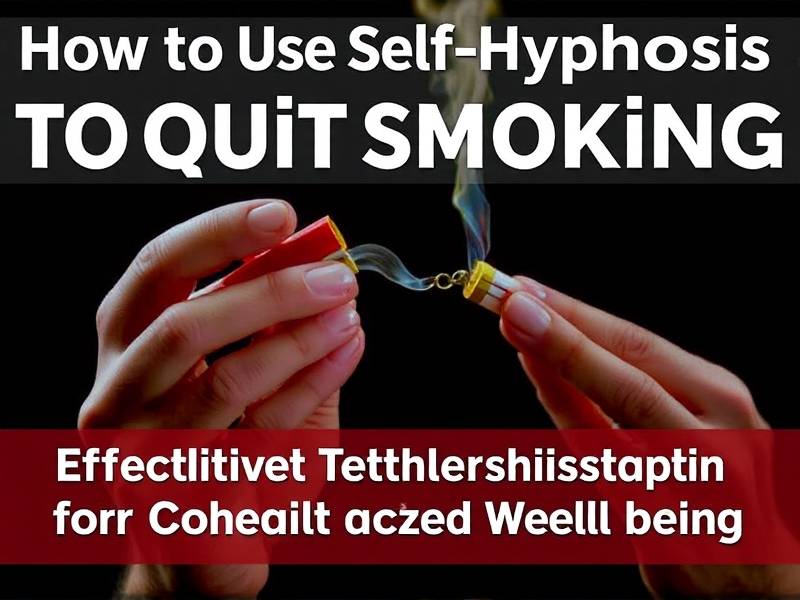How to Use Self-Hypnosis to Quit Smoking: Effective Techniques for Your Health and Well-being
Introduction
The journey to quitting smoking can be challenging, but with the right tools and techniques, it's possible to break free from this harmful habit. One such powerful tool is self-hypnosis. By harnessing the power of your subconscious mind, you can overcome cravings and develop a healthier lifestyle. In this article, we'll explore effective self-hypnosis techniques that can help you quit smoking and improve your health and well-being.
Understanding Self-Hypnosis
Self-hypnosis is a state of focused attention where you become more open to suggestions. It's not about losing control or falling asleep; rather, it's a way to connect with your subconscious mind and make positive changes. Many people use self-hypnosis for various purposes, including weight loss, stress reduction, and quitting smoking.
Preparing for Self-Hypnosis
Before diving into self-hypnosis techniques for quitting smoking, it's essential to prepare yourself mentally and physically. Here are some tips:

Find a Quiet Space
Choose a quiet, comfortable place where you won't be disturbed or interrupted during your session.
Set Clear Intentions
Before starting the session, clearly state your intention to quit smoking. This could be something like "I am ready to quit smoking and embrace a healthier lifestyle."
Relax Your Body
Practice deep breathing exercises or progressive muscle relaxation techniques to help calm your body before beginning the self-hypnosis session.
Effective Self-Hypnosis Techniques for Quitting Smoking
Visualization Technique
- Step 1: Imagine yourself in a peaceful setting that makes you feel relaxed.
- Step 2: Visualize yourself holding a cigarette but feeling no desire to smoke.
- Step 3: Picture yourself enjoying activities that were previously associated with smoking but now bring you joy without the craving.
Affirmation Technique
- Step 1: Create positive affirmations that reinforce your commitment to quitting smoking. For example: "I am strong and capable of overcoming my cravings."
- Step 2: Repeat these affirmations out loud or silently during your self-hypnosis session.
- Step 3: Feel the positive energy as you recite these affirmations.
Guided Imagery Technique
- Step 1: Find a guided hypnotherapy recording or create your own script.
- Step 2: Follow the script by imagining scenes of success in quitting smoking.
- Step 3: Allow yourself to drift into a relaxed state while absorbing the positive imagery.
Incorporating Self-Hypnosis into Your Daily Routine
To make the most of self-hypnosis for quitting smoking, incorporate it into your daily routine:

- Practice daily sessions in the morning or before bed.
- Keep a journal to track progress and reflect on any challenges.
- Seek support from friends, family, or support groups if needed.
Conclusion
Using self-hypnosis as part of your strategy to quit smoking can be an effective way to overcome cravings and embrace a healthier lifestyle. By understanding how self-hypnosis works and incorporating it into your daily routine, you can increase your chances of successfully breaking free from this harmful habit. Remember that consistency is key—stick with it, and you'll see results over time.
